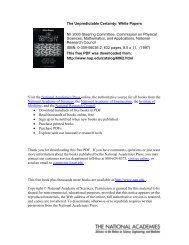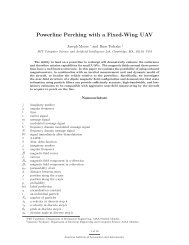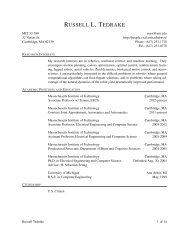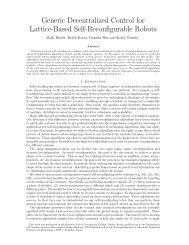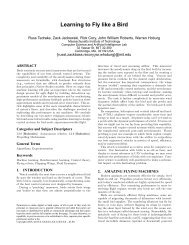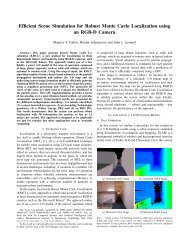Online Social Networks and E-Commerce - MIT Computer Science ...
Online Social Networks and E-Commerce - MIT Computer Science ...
Online Social Networks and E-Commerce - MIT Computer Science ...
You also want an ePaper? Increase the reach of your titles
YUMPU automatically turns print PDFs into web optimized ePapers that Google loves.
Clarence Lee <strong>and</strong> Shirley Fung<br />
revenue is from advertisers, it also seems to be a conflict of interest to depend on these companies to self-<br />
regulate privacy protection.<br />
In addition, the European Union expressed privacy protection concerns over European banks conducting<br />
business with American banks. Furthermore, the EU was especially worried about the American<br />
preference for self-regulation. Privacy laws were more developed in Europe <strong>and</strong> the EU passed the Data<br />
Protection Directive in 1995 to serve as an overarching legislature that enforced privacy protection in all<br />
EU nations. Even though the United States Government drafted the Safe Harbor proposal with the EU,<br />
this was not enough to protect consumers. One should also note that under the Safe Harbor principles,<br />
the Federal Trade Commission has not challenged any companies for failing to meet program st<strong>and</strong>ards<br />
yet. To bring this back to the electronic commerce industry, it is questionable how effective current<br />
privacy enforcement is, especially when the banking industry, storing similar information, required<br />
Congress to pass the GLBA provisions to protect consumers.<br />
This caused Congress to include Title V in the GLBA provisions. Title V include three parts:<br />
1. Financial Privacy Rule. This rule requires all financial institutions to release privacy notice to<br />
the consumer at the beginning of their business relationship <strong>and</strong> annually thereafter. The<br />
financial institution must also report what kind of information is collected about the user, where<br />
that information is shared, <strong>and</strong> how that information will be used. According to the Fair Credit<br />
Reporting Act, the notice must also inform the user of his option to opt-out of having their<br />
information shared with an unaffiliated third party.<br />
2. Safeguard Rule. This rule m<strong>and</strong>ates that business should develop a written, formal,<br />
information security plan to safeguard customer data. The plan must include the following<br />
elements:<br />
a. Assigning at least one employee to manage the safeguard measures.<br />
b. Constructing a risk management on all departments that h<strong>and</strong>les the information<br />
requiring protection.<br />
c. Developing <strong>and</strong> testing a program that can secure the customer information<br />
d. Outlining steps to change this plan as needed.<br />
3. Pretexting Rule. This is the rule that provides privacy protection against social engineering.<br />
Financial companies must take measures to defend customer information against forms of social<br />
engineering attacks such as phising <strong>and</strong> pretexting. Note that pretexting is illegal under U.S. law.<br />
Proposed Accountability Structure<br />
Page 33




![[ti]The “Vulgar Spirit of Blogging”: On Language, Culture ... - CSAIL](https://img.yumpu.com/18604217/1/190x245/tithe-vulgar-spirit-of-blogging-on-language-culture-csail.jpg?quality=85)




